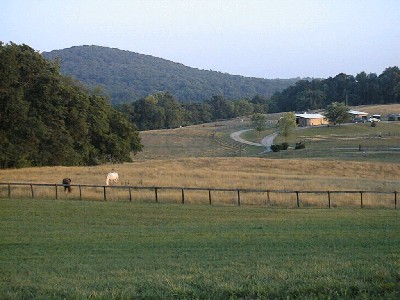

About the CSA Concept
What is CSA?
Robyn Van En founded the first United States Community Supported Agriculture Farm (CSA) in the mid-80ís called Indian Line Farm. She described CSA with this formula:
Food producers + food consumers + annual commitment to one another = CSA and untold possibilities.
This relationship between consumers and farmer makes them a team, and both parties receive great benefits from the partnership. Consumers invest in the farm with an upfront annual payment and sometimes a commitment to help out on the farm; in exchange, they receive a share of the harvest, agreeing to share in the risk or the bounty of the harvest with the farmer. But really, the benefits to members, farmers, the land, and the greater community have endless possibility.
Itís a mutual commitment to each otheróCommunity Supported Agriculture is really Agriculture-Supported Community too. The community supports the agriculture by supporting a local farm with their direct business.
But itís also Agriculture-Supported Community. Grocery stores have become our primary food sources instead of local farms and most of us donít even see farms without making a special trip for a country drive. Farms are no longer central to a community. But CSA families are suddenly supported by a farm while they support the farm, and they have a face on their farmer. They have a family doctor, a hairdresser, dentist, and a farmer. To the adults, this means they can know and trust the way their food is grown, and they meet likeminded folks in their community. People who donít have enough land or time for a garden can still reap the harvests and help out whenever they feel like it, without the burdens of everyday care for a garden. Maybe itís also encouraging them to eat more vegetables, try new things, and to eat seasonally. To the children, it means they learn that vegetables grow in farm plots not in grocery store aisles.
Where did the idea of CSA come from?
CSA really got started in the mid-60ís in Japan. A group of Japanese women were concerned about pesticides, processed foods and diminishing local food sources. Sound familiar? As a group, they re-connected with local growers they could trust and the concept was born. They called it the Teikei movement, which translates to partnership or cooperation, but members say it means ďfood with the farmerís face on itĒ.
CSA came to the United States in 1986, when Jan Vandertuin brought the idea back from his travels in Switzerland. He and Robyn Van Eyn began their first CSA in Massachusetts. They told people they could ďshare the costs to share the harvest.Ē
Where can you learn more about CSA?
Elizabeth Henderson, another pioneer in the CSA movement who is a leader in CSA farming today, wrote an excellent book about CSA called Sharing the Harvest. Robyn van Eyn contributed to the project but died suddenly in 1997 before completing the book. Sharing the Harvest is available many places, including Chelsea Green Publishing.